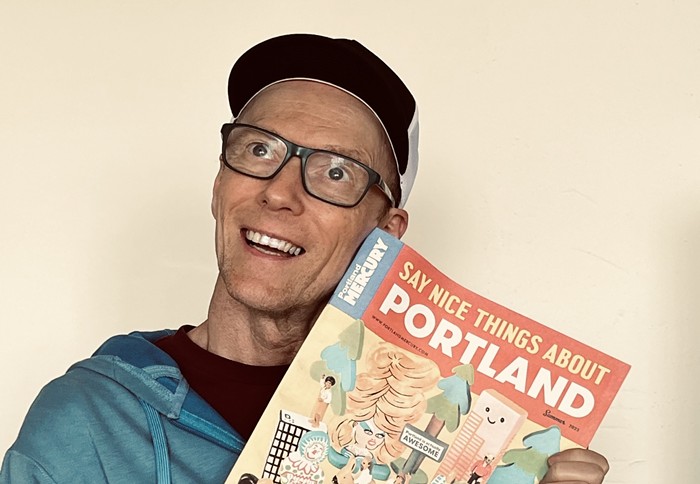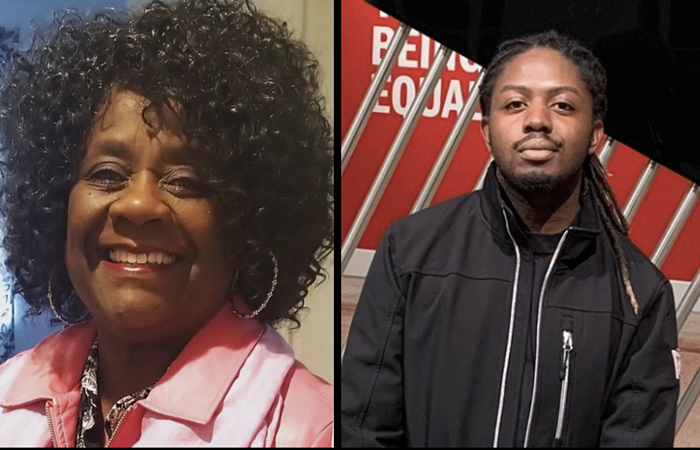"IN THE DARKNESS, a laugh was born." If you breeze through the door to Froelick Gallery's winter group show, Chill, you'll miss these cryptic words, but if you're paying attention, they'll be the first thing you see. They're written in barely legible graphite-colored pastel over black tempera paint above the dark, inexact shape of a crow in Rick Bartow's "Laugh Was Born." Look closer, and you'll see tiny crosses etched above the crow's body, and that more words have been erased above it; these cannot be read. It's a drawing that rewards effort—the longer you look, the more you see—which is also true of the show as a whole.
Like Bartow's words, many of the pieces on display contain strange particularities or buried subjects that gradually come through the longer you look. The paintings of Gabriel Liston, for example, could be confused with merely pretty, competent landscape paintings. But look closer, and you'll see evidence of human activity: a bicycle rusting under trees in "It's All Clear," an empty ravine that gradually resolves into a gesture at a freeway overpass in "18 March 2014." Liston's work is strangely poignant, not unlike the dissonant experience of hiking through what seems like wilderness and hearing the drone of a nearby freeway or spotting power lines in the distance. His landscapes are urban-adjacent, but empty. They're melancholy in a way that is visceral and specific to the Pacific Northwest, where we build cities between mountains. These are images of abandonment, but with none of the distanced gawking of disaster porn.
Gwen Davidson's very different landscapes in "Winter" and "Distant Hills IV" will be deeply satisfying if you have a predilection (as I do!) for a very particular, quiet, precise abstraction. Though Davidson employs no familiar shapes, her paintings are immediately readable as environments, texture and place reduced to overlaid horizontal strips of color. The brown and blue tones in "Winter" evoke bleached weeds against ice, the strip of slush along a highway, the weird light that bounces off snow. Davidson doesn't literally depict any of these things, and she doesn't need to. Her paintings merely set the right conditions for your own projection.
Elsewhere, Takahiko Hayashi and Barry Pelzner's very different works cast aside any nod to representation, however subtle, in favor of geometric drawings in ballpoint pen. In one of Hayashi's drawings, tiny circles constellate an electric blue sea of delicate cross-hatching on gampi paper. On a larger scale, Pelzner seems to be working out some Sol LeWitt aspirations in "Subduct" and "Spread," giant squares made through repeated marks on paper. You've probably seen work like Pelzner's before, but it's never not amazing to see an illusion of dimension made with the flattest, most limited materials: a square of paper, and the type of pen that's probably sitting in your backpack or glove compartment right now.
What's great about group exhibitions is that more work means more chances to find something that appeals to you, and you can flood your synapses with different aesthetics while you search; about two-thirds of Froelick's varied artists have work in the winter show. While "Laugh Was Born" arguably marks its far-afield boundary, there are also plenty of representational works worth your time, from Sarah Horowitz's delicate, spindly botanical drawings on antique Japanese paper to Susan Seubert's no-frills Lambda prints of objects from the Smithsonian's collection. All you have to do is look.












